Strong Women: "I Can Imagine a Market for That"
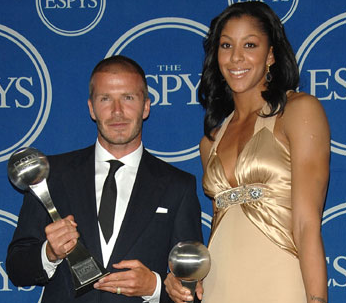
“Feminine beauty ideals have shifted with amazing velocity over the last several decades, in no realm more starkly than sports… ‘I try never to work with just the type of person who’d be attractive to me,’ said Katie Grand, the influential stylist and editor of Love magazine…. A woman of Ms. Griner’s appearance might be, Ms. Grand said, ‘fantastic to work with, since I try to work always with people who are interesting on a lot of levels.’” Dear beauty industry: fuuuuuuuuuuck youuuuuuuuuuu.
UK General Election To End Stabbingly

Knifecrime Island Stabber-In-Chief Gordon “One-Eye” Brown went off to the Queen for her permission to dissolve Parliament, and now the elections are on for May 6. Most are predicting a hung Parliament (you can learn what that means here!), and it’s not unlikely that the Conservatives will win a narrow majority; also, they are running on a platform of “hope” and “change.” (That means something different in England, though, since they’re already a socialist monarchy.) The English are excited, of course: “Quick! Gordon Brown is in Kent! Lets go raid his fridge!!” is how the kinder Twitters are going. (Fridge is slang for “face” and raid is slang for “stab.”)
How Banks Work (#15 in a Series: Chase Debit Cards)

“Your Chase Checking account has a feature called Chase Debit Card Overdraft CoverageSM. Soon, we can no longer provide this coverage automatically — if you want to keep it, you need to tell us.” Aww, you can no longer provide it? Well… okay!
What’s that, you say?
“With Chase Debit Card Overdraft Coverage, we may approve everyday debit card transactions for you, at our discretion, when you don’t have sufficient available funds. This may include times when funds from your deposit are not available or when you cannot make a deposit until later that same business day.” [“Are not available” = “we’re using your money.” “May” = “may”!]
DO GO ON.
“We will charge an insufficient funds/overdraft fee of $34 each time we pay an overdraft created by check, ACH, in-person withdrawal, debit card transaction or other electronic means. We will charge a returned item fee of $34 for any check or ACH transaction that is returned because your account had insufficient funds. The most you would pay is three fees per day for insufficient funds or returned items, no matter the number of transactions.” [So, if one accidentally overdrafts, not noticing, and makes multiple purchases, one will rack up $102.]
• “Also, each time your account is overdrawn for 5 consecutive business days, we will charge you an additional $15.” [Does that include day one? Does that make it $117? Unclear!]
• “Once an overdraft has occurred, you are obligated to bring your account to a positive balance promptly.” [VAGUE! How soon is promptly?]
• “Whether your overdraft will be paid is at Chase’s discretion, and we reserve the right not to pay. For example, we typically do not pay overdrafts if your account is not in good standing, or you are not making regular deposits, or you have had excessive overdrafts.” [Strangely not vague actually!]
• “If you have sufficient funds available under Chase Overdraft Protection, funds will automatically be transferred from your Chase savings account, credit card or home equity line of credit (except Texas) to cover your overdraft purchases. Chase Overdraft Protection may be subject to a credit approval. Fees may apply, including a $10 transfer fee.” [That costs a bank $10 to do? Gosh, it must be expensive running a bank.]
• “Whether you have Chase Debit Card Overdraft Coverage on your checking account will not affect how we treat your recurring debit card transactions (such as a gym membership). In particular, we may, at our discretion, authorize and pay a recurring debit card transaction that causes an overdraft and charge an insufficient funds/overdraft fee even if you do not maintain Chase Debit Card Overdraft Coverage on your account.” [I’m sorry, you what now? So… having a debit card actually autoenrolls one in overdraft coverage for recurring payments? Then why am I reading all of this and now opting out???]
Because, right: NO THANK YOU.
“We want you to fully understand the potential consequences of removing Chase Debit Card Overdraft Coverage from your account so you can make sure this decision is right for you.”
Well, I was pretty sure already that I didn’t want it? But heck! I would like to fully understand!
“Removing your coverage means:
* Everyday debit card purchases will be denied if you don’t have sufficient funds.” [That sounds reasonable! It being a DEBIT CARD and all!]
* “You may need to make sufficient deposits in advance so that everyday debit card purchases get approved.” [Right, you will continue to hold deposits for between 3 and 5 business days and do things with my money until eventually someone makes that illegal, that’s fine, I expect no better from a bank.]
* “If you don’t have sufficient funds in your account, or available under Overdraft Protection, you will not be able to use your debit card.” [Right, because it’s… a debit card! Not a Chase Gets to Charge Lots of Fees card! Or… IS IT?]
Well, At Least One Lucky Thing Happened Between 1945 and 1949
“The family of a Long Island Holocaust survivor can keep a $10 million ancient Assyrian gold tablet he received in exchange for a few packs of smokes on the streets of post-war Berlin, a judge has ruled.”
–Well at least something good came out of the Holocaust?
The "Office" of the "Future"

Fast Company took a look recently at some offices of the ‘future,’ which, ha, who’s going to work in offices in the future? Among others, they look at Macquarie, which is where Prison Island trading floor drones watch porn while their coworkers are doing live TV spots. One bit that is of interest is making plans that deal with the fact that, in offices, people don’t actually work so much! (Hence: the existence of blogs!) The average complete workforce turnout is 50% of headcount. So they are underbuilding office plans now: “At Macquarie, 50% attendance translates to 85% occupancy in the new office.” So, some day in the future, everyone will show up for work all at once and have to leave. That future sounds okay maybe?
The Official Awl NCAA Bracket Challenge: Our Winner Revealed!

Believe it or not, it’s been almost a month since we embarked on this magical journey that is the Official Awl Tournament Bracket Challenge. There have been ups, there have been downs, but like everything, it’s run its course and now’s the time to say goodbye. But you know what they say, if you really love something, let it go and if it comes back to you, it’s yours forever.
So Duke won the actual tournament in a pretty exciting game that ended with (slight) underdog Butler missing the last shot in regulation to push the game in the overtime. It was a somewhat exciting finish to a very exciting tournament. I think we can all say that we really got our money’s worth! (We paid zero dollars, so really, we would have come out ahead either way.)
More impressive than Duke’s victory to become this year’s best college basketball team in the world, though, was T. Keiser’s ability to go into the Final Four weekend with the lead and hold off the rest of the field to win two Jock Jams CDs of his choice from those available for purchase at Amazon.
In no particular order (except by points), here is your top ten:
1. Mid-Major Major Major Major 2, T. Keiser
2. DetectiveGoose 1, J. Elliott
2. daedalus72 1, c. hollow
4. mgw, M. Withers
5. PDXDavidJ 1, D. Jacobs
6. yeetar 1, S. Bressack
7. Comfy Sweater, A. Dobbins
8. FaceYourFace 1, A. Skildum
9. Vitale Organ Meat, R. Iracane
10. bradluen, B. Luen
The highest Awl contributor was Kathleen “Katie Bakes” Baker, who after spending the first two weeks in the dregs, came out of nowhere (because, I mean, she’s a girl, and it’s not like this is a pie baking bracket tournament challenge, right?) to claim the contributor title.
The biggest surprise of the tournament however was probably Awl editor Choire Sicha’s second page finish, for which he completed a bracket that was more correct than almost 3/4 of all of the other brackets in all of America, even while he has never watched college basketball in his entire life. Just think about that for a second.
And so I guess that rounds up the first annual Awl Tournament Bracket Challenge. Special thanks goes to Sorry Your Heinous (Ross, commenter #246) for his suggestion for us to even do this, and many thanks to all of the people who participated!
World's Worst Company Has Worst Coal Accident in Two Decades
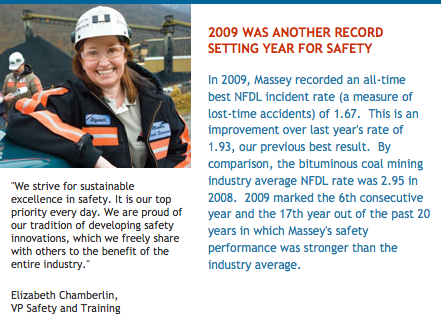
An unbelievable mining accident happened yesterday in West Virginia, killing 25, with 4 missing. The mine is owned by Performance Coal, a subsidiary of Massey Energy Co.-the “largest coal producer in Central Appalachia” which had a “record setting year for safety” in 2009. Also, you know: helmed by pretty much just evil, in the form of CEO Don Blankenship: “Union leaders say Mr. Blankenship, 56, is the main reason that less than a quarter of the state’s coal miners are now organized, down from about 95 percent just three decades ago. And environmentalists describe him as the biggest force behind a highly destructive form of mining called mountaintop removal that involves using explosives to blow off the tops of mountains to reach coal seams.”
'Sweet Valley High,' the Great Retweening and Why Boys Won't Read
by Katie Baker
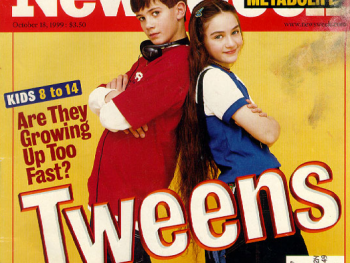
“Has there ever been a better moment for tween girls?” asked Ada Calhoun in the L.A. Times last week, pointing to the cultural ascendancy of Disney and Nickelodeon robots Hannah Montana, Taylor Swift, iCarly and Selena Gomez. Then fans of American Idol watched as an army of twexters voted for dreamy over Didi. (“America is a teenage girl,” lamented TV blogger Richard Lawson.) So strong is the spirit of this young generation that even the women of my own just-older cohort have sought its approval, offering up recycled heirlooms from our own childhoods like so many olive branches. Just hitting bookstores is The Summer Before, a Baby-sitters Club prequel that will pave the path for the re-release of several early BSC installments — The Truth About Stacy, anyone? — later this spring.
The BSC announcement triggered a deluge of inquiries to Scholastic, particularly from “people who had a next generational stake — teachers, librarians, parents” — who grew up adoring the series themselves. It might take these committed “ambassadors” to drum up real attention, given the enormous amount of content currently tailored just for young girls.
* * *
But what of their brothers? In the glittering galaxy of “aspirational” characters, it is difficult to find any live-action males who are more than a sidekick. (Who knew Sam from Clarissa Explains It All would one day be the norm?) “The world is becoming more coed, and tween TV is reflecting that,” Calhoun writes.
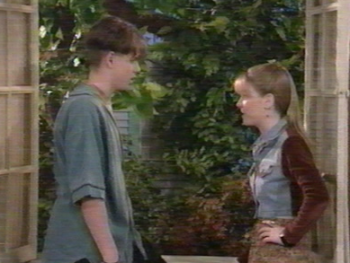
Tween test scores are reflecting something worse. In a Sunday op-ed in the New York Times, “The Boys Have Fallen Behind,” Nick Kristof presented a slew of grim statistics to back up the headline, including a Center on Education Policy report finding that boys lag in reading in every US state. This is not out of nowhere: Christina Hoff Summers, for one, was writing back in 2000 that “it’s a bad time to be a boy in America,” having questioned the conventional wisdom that boys were favored in classrooms many years before that. Drawing on Richard Whitmire’s new book Why Boys Fail, Kristof argues that while the world has grown increasingly verbal, the boys have not.
“Some people think that boys are hard-wired so that they learn more slowly,” Kristof wrote, “perhaps because they evolved to fight off wolves more than to raise their hands in classrooms.” (Ah yes! And presumably the girls have been naturally selected to submit to authority.) But, anyway, Kristof floats a solution:
Some educators say that one remedy may be to encourage lowbrow, adventure, or even gross-out books that disproportionately appeal to boys (I confess that I was a huge fan of the Hardy Boys, and then used them to entice my own kids into becoming avid readers as well.)
Indeed, the more books make parents flinch, the more they seem to suck boys in. A web site, guysread.com, offers useful lists of books to coax boys into reading, and they are helpfully sorted into categories like “ghosts,” “boxers, wrestlers, ultimate fighters,” and “at least one explosion.”
This is an age-old issue: should kids be allowed to read whatever they want, so long as they’re reading? Or adults, while we’re at it: N.B. that great back-of-the-bus scene in A League of Their Own:
Mae Mordabito: Sound it out…
Shirley Baker: Kimm…
Mae: Kimono.
Shirley: Kimono, kimono. Off. And. Gr — Gra — Grabb”d.
Mae: Grabbed.
Shirley: Her. M — mi — mil — mil — milky, milky. White, white. Milky white.
Evelyn: Mae. What are you giving her to read?
Mae: Oh, what the difference does it make? She’s reading, okay? That’s the important thing. Now go away, go, shoo, shoo. Go ahead, Shirley, you’re doing good.
Shirley: Thanks, Mae. Milky white bre- breasts.
[Gives Mae a surprised look]Mae: It gets really good after that. Look. The delivery boy walks in…
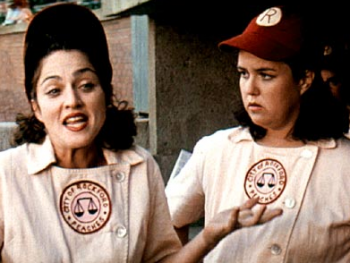
It was no World War II-era kimono porn, but Sweet Valley books were still the sort of literature that could be pulled from one’s hands at any moment by a disapproving mother or guardian. One such would-be vigilante was West Virginian librarian Mary Huntwork, who in 1990 took to the pages of The School Library Journal in despair: her 11-year old “good reader” daughter had “fallen prey” to those “skimpy-looking paperbacks with the rosy-cheeked blonds on the cover,” the ultimate betrayal.
Nick Kristof may feel a low-simmering shame for his love of the Hardy Boys, but those books were Balzac in comparison to Sweet Valley. Huntwork laid out all of the reasons to cluck: “poor character development; weak writing; use of stereotypes; emphasis on superficial and materialistic values (clothes, makeup, cars, popularity, physical appearance); sexism (female characters find value only in relation to boyfriends); and finally, failure to reflect real life (predominance of white, middle-class characters, facile solutions to dilemmas).”
But some words on the dedication page of a genre fiction anthology caught her eye. Never apologize for your reading tastes, it said, and Huntwork softened: “Part of building trust, of course, is acceptance,” she wrote, “not only of the adolescents themselves, but of their reading choices.” Several studies outlining the positive, habit-forming benefits of reading even the schlockiest fare ultimately calmed the worried librarian. “After several months of research on teenage romance fiction, I too no longer view Sweet Valley High as a threat,” she wrote. “Still, doubts remain. I found no study that assessed the reading habits of teen romance readers two, five, or ten years after they have outgrown the books.”
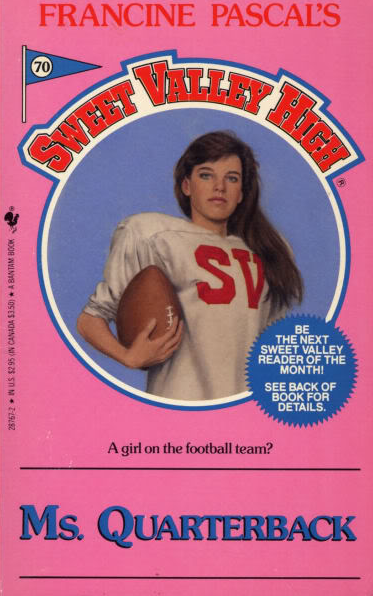
It’s unclear whether, twenty years later, we readers have outgrown the books at all. Much of the series was reissued in 2008 (with some updates, of course: Elizabeth now has a blog) and Diablo Cody has a film in the works based on the original 152-book series. (A friend coined a quite diablocodian phrase for all this commerce of nostalgia: “retweening.”) And in February, Publisher’s Weekly announced that St. Martin’s Press had picked up Sweet Valley Confidential, a novel that will follow Elizabeth and Jessica Wakefield through their now-adult years, “providing a flashback to their youth for 20- and 30-something women everywhere.”
Rebecca Mead’s New Yorker story late last year about tween publishing powerhouse Alloy (itself a descendant of Sweet Valley High “book packager” Cloverdale Press) ran for seven thousand words, roughly 95% of which are about girls. Mead details, with sparkling detail, brainstorm sessions ranging from “a ‘Marley & Me’ for teen girls” to a “young, female Jason Bourne” to every mathematically possible Gossip Girl permutation and derivative. Boys get no more than a few token mentions: once in conjunction with a “zombies for tweens” book; once while dissing a box-office flop called Sex Drive that starred Seth Green and was based on a book for boys called All The Way; and here, in the article’s Historical Pullback:
The business of packaging books for kids was invented…by Edward Stratemeyer…who got his start writing boys’ stories for the magazine Golden Days…before launching his own adventure series, “The Rover Boys,” in 1899. Stratemeyer’s innovation was to produce books that were intended to entertain rather than to instruct, as was more typical of children’s literature at the time. The series, which was published under the pseudonym Arthur M. Winfield, begins when three Rover brothers, Tom, Dick, and Sam, are sent off to a military academy for misbehaving at home.
The misbehavior theme struck me: “Hardy Boys were my favorite,” a friend said when I asked what he read as a boy, besides Goosebumps. “They actually got into trouble and stuff.”
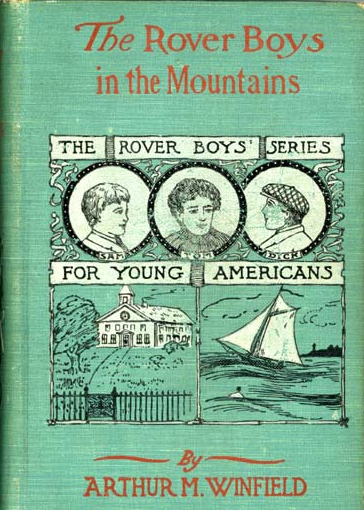
So boys, who once read about getting into trouble, now get into trouble for not having read. Kristof points out that verbal skills are often taught “in sedate ways that bore boys,” causing them to “get frustrated, act out, and learn to dislike school.” This is not dissimilar to another demographic that shies away from books: adults learning English as a second language. Many ESL students “assume that reading must always be hard work, that it must entail word by word decoding of difficult texts,” Kyung-Sook Cho and Stephen D. Krashen wrote in their study, “Acquisition of vocabulary from the Sweet Valley Kids series.”
The subjects, four women aged between 21–35 and in possession of varying levels of English proficiency, were given the second-grade-level Sweet Valley Kids series (chosen for being “both interesting and comprehensible”) and encouraged to underline unfamiliar words or ask questions as they moved through the text. After a couple of months:
All four women became enthusiastic readers… After the first volume, all four women were clearly hooked on the Sweet Valley Kids series… [Mi-ae] reported reading them in nearly every free moment and expressed the desire to read the entire 33-volume series. In her own words (translated from Korean): “I never get bored reading the Sweet Valley series. This series of English books is the most interesting and understandable I have ever read. The Sweet Valley series are the only English books I keep reading.”
The four women, on average, cruised through at a clip of over 100,000 words per month during the study, a pace faster than that of the average US middle-class child. (Cho and Krashen cite a 1998 study estimating that this child reads somewhere in the ballpark of one million words a year, while Kristof quotes a lower number of 800,000 based on Whitmire’s recent work and warns that by fifth grade a child at the bottom of his class may only be reading 60,000 words a year.)

“I read the Sweet Valley series with interest and without the headache that I got when reading Time magazine in Korea,” said Jin-hee, another subject in the study. “Most interestingly, I enjoyed reading the psychological descriptions of each character.”
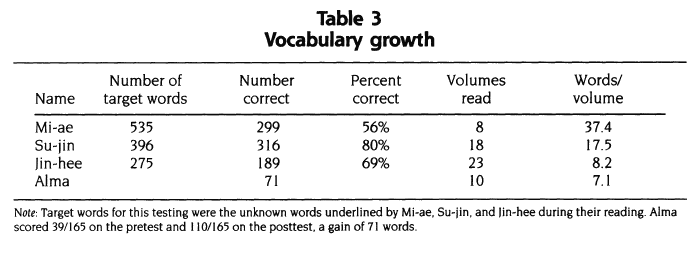
That last part is key. Much that I have read about Sweet Valley lists as a positive the tendency of girl readers to assess and relate to one or more of the series’ archetypes. In the case of Sweet Valley, it’s a binary: “the series’ trademark characters — sweet, studious Elizabeth and flirty, scheming Jessica — were dramatically different aspirational fantasy figures who appealed to readers’ dreams of being both the good girl and the bad girl,” wrote Amy Pattee in The Horn Book Magazine when Sweet Valley was first retweened in 2008.
The cult of personalities extends to even more scattered casts. Ask a woman my age which Baby-sitter was her favorite, and you’re likely to get a strong answer — “I want to be Stacey when I grow up,” wrote one commenter on a Flavorwire post that asked Where The Baby-sitters Are Now. Her feelings aren’t surprising: publishers and the marketers following behind them have for years encouraged this sort of choosiness, turning characters into mini-brands. Nearly a decade before girls my age were having wild and crazy sex and declaring themselves a Samantha, they were watching Wild ’n’ Crazy Kids and declaring themselves… a Samantha.
Boys have fewer printed-page characters with whom to relate, and many turn instead to sports or video games. A 1996 Brandweek article about how to lure girls into playing computer games mentions males only once: “blood-thirsty game-players making Doom, Duke Nukem and Quake into alt-entertainment phenomena.” Little has changed in fourteen years. Still, instead of pinpointing what it is that attracts boys to gaming and adapting their output accordingly, media execs are just co-opting its lingo: Calhoun writes that a year ago Disney launched a “boy-centric” channel called Disney XD that lamely borrows the video game concept of “leveling up” to emphasize teamwork and effort. Can’t you hear all the Halo players slamming down their controllers in disgust?
* * *
While marketers used video games to grab boys’ attention, girls my age were wooed by our love of schlocky fiction: the Brandweek piece mentions a “Baby-Sitter’s Club Friendship Kit” CD-ROM with which girls could “create storylines using their favorite BSC characters.”
“The great thing about these products is, they put the girl in control,” said one media executive, using a language of empowerment that crops up all the time. (As Huntwork concluded in her essay: “Each time a girl selects a Sweet Valley High book, she is telling us something. Publishers know this and have listened closely.”) But there lurks a downside to all this kowtowing: one writer quoted by Calhoun argues that icons like iCarly “show boys only the way girls want to see them.” Disney executives, according to Calhoun, insist that “the issue isn’t that boys aren’t being served enough boy characters, but that boys have changed and now have no problem relating to strong female leads.”

Calhoun’s piece is littered with these sorts of semi-Darwinian references. It’s troubling that while girls are encouraged to exist on their terms, boys are expected to improve, to level up, as it were. “We’ve found that boys, especially in recent years, have become more emotionally intelligent,” said Nickelodeon’s Marjorie Cohn, adding that “in the same way we celebrate Hillary Clinton, we should celebrate boys being able to talk about relationships.” Disney’s Gary Marsh, meanwhile, calls tween boys “complex beings who are evolving.” Now’s as good a time as any to shed all those pesky wolf-fighting genes, I suppose.
To hear writer Jen Singer describe it, though, little boys’ taste hasn’t suddenly changed. Writing on the Times’ Motherlode blog, she describes her own small transgression, her let-them-eat-dirt:
“Who would send this in?” asked another mom who was helping set up the elementary-school book swap. She held up [my] copy of “Oh, Yuck! The Encyclopedia of Everything Nasty,” and grimaced at the cover, which featured a photo of a kid picking his nose. “The boys are going to all herd around this one.”
I can remember boys herding like that, snickering furtively and elbowing ribs. The book was the dictionary, and the passage in question was the definition of “mount.” Boys were then boys, as they ever will be, and it turns out we really ought to have been praising them: not only were they reading, they were kind of discussing relationships too.
Katie Baker had a Kirsten, and then was a Dawn (but was really a Kristy) before settling into life as a Miranda.
British Sheep Finally Discover Something Scarier Than Welshmen

What sinister creatures float above Knifecrime Island, and why do they have such animosity for its sheep? Well, according to the Sun, the answers are a) aliens and b) it’s more along the lines of “research.” But read more of this harrowing tale!
Fuming farmers have been waking up to find animals dead after seemingly being “experimented on”.
UFO hunters who set up a special team to investigate are linking the mutilations — including the removal of sheep brains and eyes — to sightings of mysterious reddish orange lights in the sky.
After staging a dramatic stake-out they claim to have even WITNESSED unsuspecting sheep being zapped by two of the spheres.
I’m convinced! I mean, it seems much more likely that sheep are being mutilated by horrible monsters from another world than, I dunno, some kids with knives.
David Remnick: The Poem

I learned a lot about New Yorker editor/Barack Obama biographer/S. I. Newhouse Jr. on-record compliment recipient David Remnick in today’s Times profile. In fact, so moved was I by this piece and its appreciation of what appears to be the most beloved man in the industry that I decided it merited a poem. Would you like to read it? I bet you would!
David Remnick: American Giant
David Remnick writes and edits
In his spare time he reports
Those are just three of his credits
He’s got talents of all sorts
David Remnick trimmed his budget
Saved his staff from major cuts
He’s a hero-let’s not fudge it-
A mensch! This ain’t some Conde putz
David Remnick, unpretentious,
Skips the Conde bigwig haunts
Takes the subway, shuns the limelight
Eats at average restaurants
David Remnick’s sole frustration
Comes from overheated prose
He won’t sleep or take vacation
Ask his wife! She really knows
David Remnick soothes his writers
Treats each one with charm and grace
If you are in town on business
You can stay at David’s place
David Remnick walks on water
Which should come as no surprise
Raise your head and look above you
David Remnick even flies
